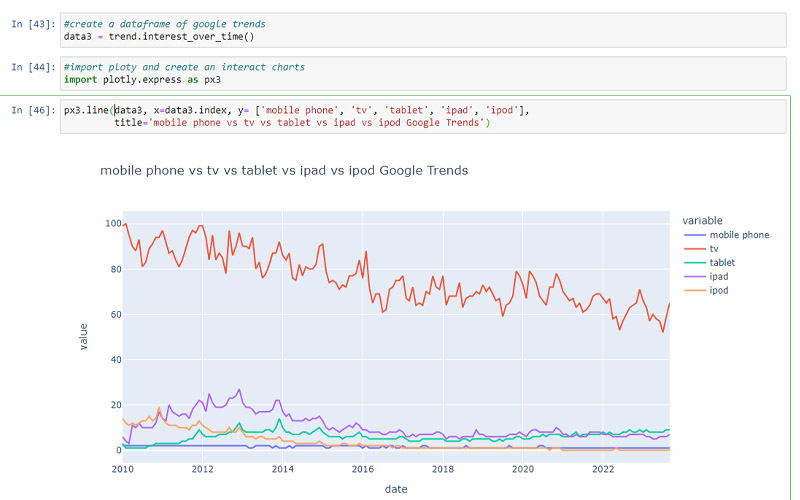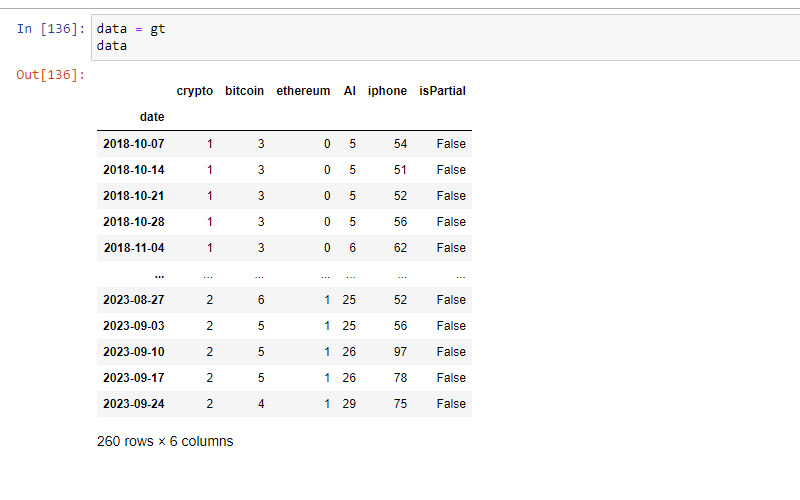Google Search, the flagship product of the tech giant Google, has revolutionized the way we access information in the digital age. Google’s search capabilities extend far beyond simple keyword matching; it incorporates artificial intelligence and machine learning techniques, ensuring that users receive the most accurate and helpful results possible.
Google Trends is a powerful and insightful tool offered by Google that provides a real-time glimpse into the collective interests and curiosities of internet users worldwide. It allows users to explore the popularity of specific search terms over time, helping marketers, researchers, and businesses gain valuable insights into current trends and consumer behavior.
By analyzing the search volume patterns of keywords, Google Trends enables users to identify rising topics, seasonal trends, and regional preferences. It’s an invaluable resource for businesses looking to refine their marketing strategies, content creation, and product launches based on what people are actively searching for. Moreover, Google Trends offers the ability to compare the popularity of multiple search terms, helping users understand the relative interest levels and make data-driven decisions.

Analyzing the search volume patterns of keywords.
Use Keywords: ChatGPT, Apple, Samsung, Nokia
Time frame: 2022-01-01 to 2023-10-02

Based on the Matplotlib diagram, the average search volume for the keyword ‘Samsung’ indicates it is the top search term in Google Trends. ‘Apple’ ranks as the second most popular trend. ChatGPT began to gain traction in January 2023. On the other hand, ‘Nokia’ has the lowest trend, indicating it was not popular from April 2022 to September 2023.






One of the significant advantages of Google Trends is its ability to provide context to data. It not only showcases the search interest over time but also offers related queries and topics, giving users a comprehensive view of the subject matter.
Additionally, Google Trends can reveal regional differences, allowing businesses to tailor their campaigns to specific locations. Furthermore, it can predict the popularity of certain terms during specific times of the year, aiding businesses in planning their marketing activities around seasonal trends.
Disclaimer for Data Analysis and Data Science
** The purpose of creating this Data Analysis and Data Science is solely for educational use, and any commercial use is strictly prohibited.
This disclaimer (“Disclaimer”) is provided to inform users of the data analysis and data science findings (“Analysis”) that the following terms and conditions govern its use. By accessing and using the Analysis, you acknowledge and agree to the terms set forth herein. If you do not agree with these terms, please do not use the Analysis.
1. Purpose and Nature of the Analysis
The Analysis is intended exclusively for informational and analytical purposes. It is not intended as professional advice, and it should not be considered as a substitute for expert consultation or guidance in specific areas of expertise. The Analysis is a representation of data at a particular point in time and should not be interpreted as a definitive source of information.
2. Data Accuracy and Limitations
The data used in the Analysis is sourced from various publicly available or authorized data sets and may be subject to inaccuracies, errors, or omissions. Users are advised to independently verify any critical information or data points presented in the Analysis. The Analysis may also involve assumptions and simplifications that can impact the accuracy and comprehensiveness of the results.
The results of this analysis may be subject to limitations, assumptions, and uncertainties inherent to the data sources, methods, and models employed. Any decisions or actions taken based on the information in this analysis are the sole responsibility of the user, and we disclaim any liability for the consequences of such decisions or actions.
3. User Responsibility
Any decisions, actions, or interpretations made based on the Analysis are solely the responsibility of the user. We disclaim any liability for the consequences of such decisions or actions. Users should exercise caution and critical judgment when utilizing the Analysis to inform any course of action.
4. Data Privacy and Ethical Considerations
Users must respect data privacy and ethical principles when conducting their own analyses or using information presented in the Analysis. Ensure that you have the necessary permissions and adhere to all applicable laws and regulations when handling and analyzing data, particularly when working with sensitive or personal data.
5. No Warranty
We make no warranties or representations regarding the accuracy, completeness, or suitability of the Analysis for any specific purpose. The Analysis is provided “as is,” and we expressly disclaim all warranties, express or implied, including but not limited to the implied warranties of merchantability and fitness for a particular purpose.
6. Changes and Updates
This Disclaimer may be subject to change without notice. Users are encouraged to review it periodically for any updates or modifications. Continued use of the Analysis following changes to this Disclaimer implies acceptance of the revised terms and conditions.
7. Contact Information
If you have any questions, concerns, or require clarification about this Disclaimer or the Analysis presented herein, please seek professional advice or contact us directly at [Contact Information].
This detailed disclaimer provides users with a comprehensive understanding of the limitations, responsibilities, and purpose of the data analysis, emphasizing the importance of independent verification, ethical considerations, and user discretion.

